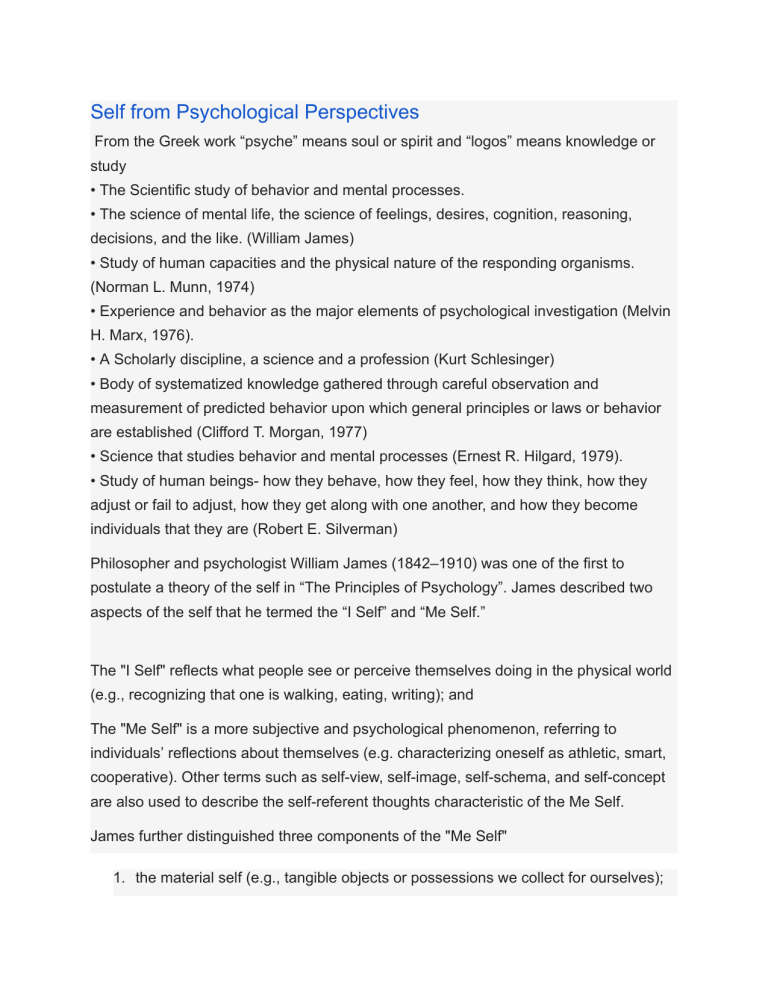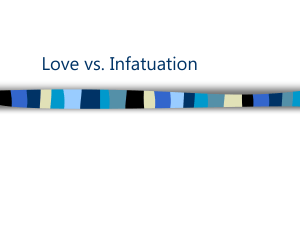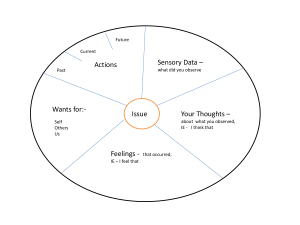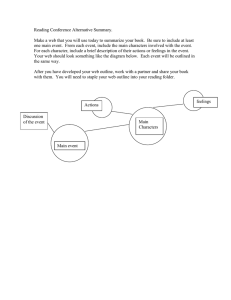
Self from Psychological Perspectives From the Greek work “psyche” means soul or spirit and “logos” means knowledge or study • The Scientific study of behavior and mental processes. • The science of mental life, the science of feelings, desires, cognition, reasoning, decisions, and the like. (William James) • Study of human capacities and the physical nature of the responding organisms. (Norman L. Munn, 1974) • Experience and behavior as the major elements of psychological investigation (Melvin H. Marx, 1976). • A Scholarly discipline, a science and a profession (Kurt Schlesinger) • Body of systematized knowledge gathered through careful observation and measurement of predicted behavior upon which general principles or laws or behavior are established (Clifford T. Morgan, 1977) • Science that studies behavior and mental processes (Ernest R. Hilgard, 1979). • Study of human beings- how they behave, how they feel, how they think, how they adjust or fail to adjust, how they get along with one another, and how they become individuals that they are (Robert E. Silverman) Philosopher and psychologist William James (1842–1910) was one of the first to postulate a theory of the self in “The Principles of Psychology”. James described two aspects of the self that he termed the “I Self” and “Me Self.” The "I Self" reflects what people see or perceive themselves doing in the physical world (e.g., recognizing that one is walking, eating, writing); and The "Me Self" is a more subjective and psychological phenomenon, referring to individuals’ reflections about themselves (e.g. characterizing oneself as athletic, smart, cooperative). Other terms such as self-view, self-image, self-schema, and self-concept are also used to describe the self-referent thoughts characteristic of the Me Self. James further distinguished three components of the "Me Self" 1. the material self (e.g., tangible objects or possessions we collect for ourselves); 2. the social self (e.g., how we interact and portray ourselves within different groups, situations, or persons); and 3. the spiritual self (e.g., internal dispositions). and the components of the "I Self" 1. individual self – individual traits, abilities and possessions; 2. relational self – other people with whom we have a personal relationship; and 3. collective self – social roles, social categories, and social group membership. The physical self is shaped by biological and environmental factors Neurotransmitters are chemical messengers in the body. Their job is to transmit signals from nerve cells to target cells. These target cells may be in muscles, glands, or other nerves. The brain needs neurotransmitters to regulate many necessary functions, including:✓ heart rate ✓ breathing ✓ sleep cycles ✓ digestion ✓ mood ✓ concentration ✓ appetite ✓ muscle movement Adrenaline ▪ Adrenaline is primarily a hormone released by the adrenal gland, but some neurons may secrete it as a neurotransmitter` ▪ It increases heart rate and blood flow, leading to a physical boost and heightened awareness ▪ It is produced during stressful or exciting situations Noradrenaline ▪ In contrast to adrenaline, noradrenaline is predominantly a neurotransmitter that is occasionally released as a hormone ▪ It contracts blood vessels and increases blood flow, improving attention and the speed at which responsive actions occur Dopamine ▪ It is primarily responsible for feelings of pleasure, but is also involved in movement and motivation ▪ People tend to repeat behaviors that lead to dopamine release, leading to addictions ▪ Abnormal dopamine secretion is common in specific movement disorders, like Parkinson’s disease Serotonin ▪ Contributes to feelings of well-being and happiness ▪ Is affected by exercise and light exposure, and plays a role in the sleep cycle and digestive system regulation GABA ▪ Inhibits neuron firing in the CNS – high levels improve focus whereas low levels cause anxiety ▪ Also contributes to motor control and vision Acetylcholine ▪ Involved in thought, learning and memory within the brain ▪ Activates muscle contraction in the body and is also associated with attention and awakening Glutamate ▪ Most common brain neurotransmitter ▪ Regulates development and creation of new nerve pathways and hence is involved in learning and memory Endorphins ▪ Release is associated with feelings of euphoria and a reduction in pain (body’s natural 'pain killers’) ▪ Released during exercise, excitement and sex As humans, we constantly grow throughout our lifespans, from conception to death. Understanding the concept of the self in the perspective of Psychology strive to understand and explain how and why people change throughout life. While many of these changes are normal and expected, they can still pose challenges that people sometimes need extra assistance to manage. Different Theories of Development Theory of Psychosexual Stages of Human Development Freud proposed that psychological development in childhood takes place during five psychosexual stages: oral, anal, phallic, latency, and genital. These are called psychosexual stages because each stage represents the libido (roughly translated as sexual drives or instincts) in different areas of the body. Sigmund Freud, father of Psychoanalysis, believed that all human beings pass through a series of psychosexual stages. Fixation is the tendency to stay at a particular stage. The individual is troubled by the conflict that characterizes the stage and seeks to reduce it by means of the behavior characteristics of that stage. ▪ Oral stage – the first year of life; mark’s the infant’s need for gratification from mother. ▪ Anal stage – reflects the toddler’s need for gratification along the rectal area. Children must endure the demands of toilet training. ▪ Phallic stage – It concentrates on the preschooler’s gratifications involving the genitals. Children at this stage gratify their sex instinct by fondling their genitals and developing incestuous desire to opposite sex parent. ▪ Latency stage – sexual desires are repressed and all the child’s available libido is channeled into socially accepted outlets. ▪ Genital stage –is characterized by the maturation of the reproductive system, production of sex hormones, and a reactivation of the genital zone as an area sensual pleasure. Sigmund Freud believed that behavior and personality were derived from the constant and unique interaction of conflicting psychological forces that operate at three different levels of awareness: the preconscious, conscious, and unconscious. He believed that each of these parts of the mind plays an important role in influencing behavior. In order to understand Freud's theory, it is essential to first understand what he believed each part of personality did, how it operated, and how these three elements interact to contribute to the human experience. Each level of awareness has a role to play in shaping human behavior and thought. The preconscious consists of anything that could potentially be brought into the conscious mind. The conscious mind contains all of the thoughts, memories, feelings, and wishes of which we are aware at any given moment. This is the aspect of our mental processing that we can think and talk about rationally. This also includes our memory, which is not always part of consciousness but can be retrieved easily and brought into awareness. The unconscious mind is a reservoir of feelings, thoughts, urges, and memories that are outside of our conscious awareness. The unconscious contains contents that are unacceptable or unpleasant, such as feelings of pain, anxiety, or conflict. Freud likened the three levels of mind to an iceberg. The top of the iceberg that you can see above the water represents the conscious mind. The part of the iceberg that is submerged below the water, but is still visible, is the preconscious. The bulk of the iceberg that lies unseen beneath the waterline represents the unconscious. Theory of Psychosocial Development Erik Erikson said that individuals develop a “healthy personality” by mastering “life’s outer and inner dangers” Erikson maintained that personality develops in a predetermined order through eight stages of psychosocial development, from infancy to adulthood. During each stage, the person experiences a psychosocial crisis which could have a positive or negative outcome for personality development. For Erikson (1958, 1963), these crises are of a psychosocial nature because they involve psychological needs of the individual (i.e., psycho) conflicting with the needs of society (i.e., social). According to the theory, successful completion of each stage results in a healthy personality and the acquisition of basic virtues. Basic virtues are characteristic strengths which the ego can use to resolve subsequent crises. Failure to successfully complete a stage can result in a reduced ability to complete further stages and therefore an unhealthier personality and sense of self. These stages, however, can be resolved successfully at a later time. o Trust vs. Mistrust (birth to 1 year) Human life is a social endeavor that involves linkages and interactions among people. o Autonomy vs. Shame and Doubt (2 to 3 years) as children begins to crawl, walk, climb, and explore, a new conflict confronts them; whether to assert their will or not. o Initiative vs. Guilt (4 to 5 years) the repertoire of motor and mental abilities that are open to children greatly expands. Parents who give their children freedom in running, sliding, bike riding are allowing them to develop initiative. Parents who curtail this freedom are giving children a sense of themselves as nuisances and inept intruders in an adult world. o Industry vs. Inferiority (6 to 11 years) during elementary school years, a child becomes concerned with how things work and how they are made. As children move into the world of school, they gain a sense of industry by winning recognition for their achievements. But they may also acquire a sense of inadequacy and inferiority. o Identity vs. Role Confusion (12 to 18 years) the psychological question one must answers in this age is “Who am I?”. In the process, teenagers must develop an integrated and coherent sense of self. When the adolescent fails to develop a “centered” identity, he or she becomes trapped in either role confusion or a “negative identity”. o Intimacy vs. Isolation (Young Adulthood) As Erikson view intimacy is the capacity to reach out and make contact with other people. It means to fuse one’s own identity with those others. Intimacy finds expression in deep friendship, close involvement, however may result in rejection. Consequently, some individuals opt for relationship of a shallow sort. o Generativity vs. Stagnation (Middle Adulthood) Generativity defined as a reaching out beyond one’s own immediate concerns to embrace the welfare of society and of future generations, it entails selflessness. Stagnation is a condition in which individuals are preoccupied with their material possessions or physical well-being. o Integrity vs. Despair (Old age) As individuals approach the end of life, they tend to take stock of the years that have gone before. Some feel a sense of satisfaction with their accomplishments. Others experience despair- “the feeling that the time is now short, too short for the attempt to start another life and to try out alternative roads to integrity". Person-Centered Theory Carl Rogers (1902-1987) was a humanistic psychologist who agreed with the main assumptions of Abraham Maslow. However, Rogers (1959) added that for a person to "grow", they need an environment that provides them with genuineness (openness and self-disclosure), acceptance (being seen with unconditional positive regard), and empathy (being listened to and understood). Central to Rogers' personality theory is the notion of self or self-concept. This is defined as "the organized, consistent set of perceptions and beliefs about oneself. Without these, relationships and healthy personalities will not develop as they should, much like a tree will not grow without sunlight and water. Rogers believed that every person could achieve their goals, wishes, and desires in life. When, or rather if they did so, self-actualization took place. The development of congruence is dependent on unconditional positive regard. Carl Rogers believed that for a person to achieve self-actualization they must be in a state of congruence. According to Rogers, we want to feel, experience and behave in ways which are consistent with our self-image and which reflect what we would like to be like, our ideal-self. The closer our self-image and ideal-self are to each other, the more consistent or congruent we are and the higher our sense of self-worth. A person is said to be in a state of incongruence if some of the totality of their experience is unacceptable to them and is denied or distorted in the self-image. Incongruence is "a discrepancy between the actual experience of the organism and the self-picture of the individual insofar as it represents that experience. As we prefer to see ourselves in ways that are consistent with our self-image, we may use defense mechanisms like denial or repression in order to feel less threatened by some of what we consider to be our undesirable feelings. A person whose self-concept is incongruent with her or his real feelings and experiences will defend because the truth hurts. The development of congruence is dependent on unconditional positive regard. Carl Rogers believed that for a person to achieve self-actualization they must be in a state of congruence. As we prefer to see ourselves in ways that are consistent with our self-image, we may use defense mechanisms like denial or repression in order to feel less threatened by some of what we consider to be our undesirable feelings. A person whose self-concept is incongruent with her or his real feelings and experiences will defend because the truth hurts. Physical and Sexual Self Physical Self ■ refers to the body, this marvelous container and complex, finely tuned, machine with which we interface with our environment and fellow beings. It is the concrete dimension, the tangible aspect of the person that can be directly observed and examined. Body Image ■ It is the perception that a person has of their physical self and the thoughts and feelings that result from that perception. ■ These feelings can be positive, negative or both and are influenced by individual and environmental factors. Self-Esteem ■ It is your opinion of yourself. ■ People with healthy self-esteem like themselves and value their achievements. While everyone lacks confidence occasionally, people with low self-esteem feel unhappy or unsatisfied with themselves most of the time. Beauty ■ A combination of qualities, such as shape, color, or form, that pleases the aesthetic sense, especially the sight (Oxford English Dictionary) – Person – Nature – Things Schools of Thought Regarding Beauty: BEAUTY IS NOT UNIVERSAL ■ Cultural conditioning influences of perception of beauty. ■ Ideas of beauty vary throughout history + across different cultures. ■ Tastes change over time => BEAUTY IS NOT UNIVERSAL ■ Beauty is a subjective concept BEAUTY IS UNIVERSAL ■ Globalization leads to universal idea of beauty ■ “Maybe the blue landscape is genetically imprinted in us… We now completed polls in many countries – China, Kenya, Iceland, and so on – the results are strikingly similar. Can you believe it? Kenya and Iceland – what can be different in the whole fucking world – and both want blue landscapes… the blue landscapes is what is really universal, maybe to all mankind”. – Komar & Melamid, 1993 Sexual Self – Concept - Defined as an individual’s evaluation of his or her own sexual feelings and actions. - refers to the totality of oneself as a sexual being, including positive and negative concepts and feelings. Features of Sexuality Sensuality – awareness and acceptance of our own body Intimacy – experiencing emotional closeness to another Sexual Identity – process of discovering who we are in terms of sexuality Reproduction – values, attitudes, & behaviors relating to reproduction Sexualization – use of sexuality to influence, control or manipulate Attraction • is any force that draws people together. • Social psychologists have traditionally used the term attraction to refer to the affinity that draws together friends and romantic partners Love • It is any of a number of emotions and experiences related to a sense of strong affection and attachment. • The word love can refer to a variety of different feelings, states, and attitudes, ranging from generic pleasure ("I loved that meal") to intense interpersonal attraction ("I love my partner"). This diversity of uses and meanings, combined with the complexity of the feelings involved, makes the concept of love unusually difficult to consistently define, even compared to other emotional states. • As an abstract concept, love usually refers to a deep, ineffable feeling of tenderly caring for another person. Even this limited conception of love, however, encompasses a wealth of different feelings, from the passionate desire and intimacy of romantic love to the nonsexual emotional closeness of familial and platonic love to the profound oneness or devotion of religious love. • Love in its various forms acts as a major facilitator of interpersonal relationships and, owing to its central psychological importance, is one of the most common themes in the creative arts. Triangular theory of love Psychologist Robert Sternberg suggests that people can have varying degrees of intimacy, passion, and commitment at any one moment in time, this concept of love is a triangle that is made up of three components: • Intimacy, which involves feelings of closeness, connectedness, and bondedness • Passion, which involves feelings and desires that lead to physical attraction, romance, and sexual consummation • Decision/commitment, which involves feelings that lead a person to remain with someone and move toward shared goals Types of Love The three components of love interact in a systemic manner. The presence of a component of love or a combination of two or more components create seven kinds of love experiences. These types of love may vary over the course of a relationship as well. Friendship - This type of love is when the intimacy or liking component is present, but feelings of passion or commitment in the romantic sense are missing. Friendship love can be the root of other forms of love. Infatuation - Infatuation is characterized by feelings of lust and physical passion without liking and commitment. There has not been enough time for a deeper sense of intimacy, romantic love, or consummate love to develop. These may eventually arise after the infatuation phase. The initial infatuation is often very powerful. Romantic Love - Romantic love bonds people emotionally through intimacy and physical passion. Partners in this type of relationship have deep conversations that help them know intimate details about each other. They enjoy sexual passion and affection. These couples may be at the point where long-term commitment or future plans are still undecided. Companionate Love - Companionate love is an intimate, but non-passionate sort of love. It includes the intimacy or liking component and the commitment component of the triangle. It is stronger than friendship, because there is a long-term commitment, but there is minimal or no sexual desire. This type of love is often found in marriages where the passion has died, but the couple continues to have deep affection or a strong bond together. This may also be viewed as the love between very close friends and family members. Fatuous Love - In this type of love, commitment and passion are present while intimacy or liking is absent. Fatuous love is typified by a whirlwind courtship in which passion motivates a commitment without the stabilizing influence of intimacy. Often, witnessing this leaves others confused about how the couple could be so impulsive. Unfortunately, such marriages often don't work out. When they do, many chalks the success up to luck. Consummate Love - Consummate love is made up of all three components and is the total form of love. It represents an ideal relationship. Couples who experience this kind of love have great sex several years into their relationship. They cannot imagine themselves with anyone else. They also cannot see themselves truly happy without their partners. They manage to overcome differences and face stressors together. Sexual orientation Is a dynamic spectrum and may change through time. ✓ stay as heterosexual ✓ predominantly heterosexual, occasionally homosexual ✓ bisexual ✓ predominantly homosexual, occasionally heterosexual ✓ always homosexual ✓ They go through a process of discovery, as they are uncertain.






